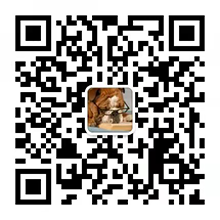一、被动语态用法全解
被动语态的时态:
1.一般现在时的被动语态:
am/is/ are +动词的过去分词
2.一般过去时的被动语态:
was/were +动词的过去分词
3.一般将来时的被动语态:
will be +动词的过去分词
4.现在进行时的被动语态:
am/is/are +being +动词的过去分词
5.现在完成时的被动语态:
have/has +been +动词的过去分词
6.情态动词的被动语态:
情态动词+ be +动词的过去分词
被动语态的基本用法:
(1)需要强调动作的承受者时
The Great Wall is enjoyed by millions of people all over the world.
English is widely spoken in the world now.
(2)不知道或没必要指出动作的执行者时
Mr.Wang is invited to the meeting today.
The problem is dealt with now.
(3)当说话人需要强调客观时
It is said that she was a beauty when she was young
主动语态变被动语态的变法:
宾变主,主变宾,谓变be done ,时不变,数格必须随被变。
注:1.主动、被动的时态要一致。
2.主动、被动的句式要一致。
3.变成的被动语态的主语与谓语在单复数上保持一致。
一般过去时被动语态基本句式
(1)肯定式:主语+ was/were +过去 分词+by?
It was made in Beijing Ren&39;ai Education Institute.
(2)否定式:主语+was/were + not +过去分词+ by?
She was not given a paniting by him.This question was not discussed at the meeting yesterday.
(3)一般疑问句:Was/Were+主语+过去分词+by?
Was it made of bamboo?
(4)特殊疑问句:特殊疑+was/were+过去分词+by?
What was it made of?
特殊情况的被动语态:
1.带双宾语的被动语态:
动词+ sb(间宾)+sth(直宾)
口诀:如遇双宾语,一般变间宾,若把直宾变,to/for间宾连。
1).give/pass/show与介词to搭配。
give sb sth 被动 :sb +be given sth或sth +be given +to sb.
e.g.He gave me a book
Iwas givena book by him.
A bookwas given tome by him.
2).buy/make/cook与介词for搭配。
buy sb sth被动:sb +be bought + sth或sth +be bought +for sb
e.g.My mother made me a cake.
I was made a cake by my mother
A cake was made for me by my mother.
2.带省to的不定式作宾补的被动语态:动词+ sb + do sth.
口诀:感使动词真叫怪,to来to去记心怀,主动语态to离去被动语态to回来。
动词:make/ let/have/see/hear/feel/watch
make sb do sth被动:sb + be +made +to do sth
e.g.The boss made the workers work all day
The workers was made to work all day by the boss.
3.see/hear/notice/keep +sb +doing sth句型中变被动语态时doing不变。
e.g.I heard Tom singing just now
Tom was heard singing by me just now.
4.以动词短语作谓语的主动语态变被动语态时,不可丢掉后面的介词或副词。p分页标题e
e.g.We should take care of the old.
The old should be taken care of.
二、被动语态的构成形式
1.被动语态的基本时态变化
被动语态通常为十种时态的被动形式, 被动语态由be 过去分词构成,be随时态的变化而变化。以do为例,各种时态的被动语态形式为:
1)am/is/are done (过去分词)一般现在时
例Visitors are requested not to touch the exhibits.
2)has/have been done 现在完成时
例All the preparations for the task have been completed, and we&39;re ready to start.
3)am/is/are being done 现在进行时
例A new cinema is being built here.
4)was/were done 一般过去时
例I was given ten minutes to decide whether I should reject the offer.
5)had been done 过去完成时
例 By the end of last year, another new gymnasium had been completed in Beijing.
6)was/were being done 过去进行时
例A meeting was being held when I was there.
7)shall/will be done 一般将来时
例Hundreds of jobs will be lost if the factory closes.
8)should/would be done 过去将来时
例The news would be sent to the soldier&39;s mother as soon as it arrived.
9)shall/will have been done 将来完成时(少用)
例The project will have been completed before July.
2.被动语态的特殊结构形式
1)带情态动词的被动结构。其形式为:情态动词 be 过去分词。
例The baby should be taken good care of by the baby-sitter.
2)有些动词可以有两个宾语,在用于被动结构时,可以把主动结构中的一个宾语变为主语,另一宾语仍然保留在谓语后面。通常变为主语的是间接宾语。
例His mother gave him a present for his birthday.可改为 He was given a present by his mother for his birthday.
3)当“动词 宾语 宾语补足语”结构变为被动语态时,将宾语变为被动结构中的主语,其余不动。
例Someone caught the boy smoking a cigarette.可改为The boy was caught smoking a cigarette.
4)在使役动词have, make, get以及感官动词see, watch, notice, hear, feel, observe等后面不定式作宾语补语时,在主动结构中不定式to要省略,但变为被动结构时,要加to。
例Someone saw a stranger walk into the building.可改为A stranger was seen to walk into the building.
5)有些相当于及物动词的动词词组,如“动词 介词”,“动词 副词”等,也可以用于被动结构,但要把它们看作一个整体,不能分开。其中的介词或副词也不能省略。
例The meeting is to be put off till Friday.
3.非谓语动词的被动语态
v.ing 形式及不定式 to do 也有被动语态(一般时态和完成时态)。
例I don&39;t like being laughed at in the public.



